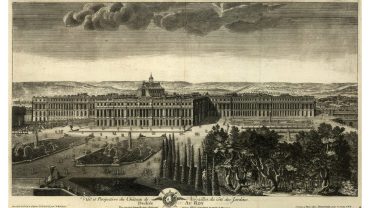The legend of Prester John, or John the Priest, a figure shrouded in mystery and intrigue, has captivated historians for centuries. The story of Prester John emerged in the mid-twelfth century during a time of great curiosity and exploration, blurring the lines between myth and reality.
This enigmatic character was said to be a powerful Christian ruler presiding over a vast and wealthy kingdom. The precise origins of this legend are obscure, but it’s believed to have been fueled by the tales of intrepid travellers, and the desire of Western European Christians to find a strong ally in their struggles against the Muslim powers in the East.
The title Prester is derived from the Greek ‘presbiteros’ meaning ‘elder’. Presbyter is the origin of the word ‘priest.’
But who was Prester John? Was he a descendant of the Magi, the Three Wise Men said to have visited the baby Jesus in Bethlehem? Were Marco Polo, Prester John and Genghis Khan linked? Did he exist at all? Let’s take a trip back to the Middle Ages in an attempt to shed light on one of the most perplexing mysteries of the mediaeval world.
The Letter of Prester John

Vintage engraving from 1876 from an original. Showing Prester John. (Credit: duncan1890 via Getty Images)
The story of the kingdom of Prester John starts in earnest around 1165 with a letter, purportedly written by Prester John himself, who claimed to be a direct relation of the Three Magi as well as a descendant of the King of India.
It was believed at the time to be true, but later considered a work of mediaeval literature rather than a genuine correspondence. Scholars have speculated on various possible origins and authors, but no definitive conclusion has been reached.
In essence, it was a description of a fantastical Christian kingdom located somewhere in the East. It was addressed to the Byzantine Emperor Manuel I Comnenus, although later embellished versions of the letter were addressed to various other European monarchs including Frederick I Barbarossa, the Holy Roman Emperor.
It provided an elaborate account of the kingdom of Prester John, depicting it as a crime-free, vice-free paradise filled with unimaginable wealth, strange creatures, and miraculous occurrences. It described a kingdom with rivers of gold, gems in abundance, and exotic animals, as well as a highly advanced and just society.
It’s believed that around 1177, Pope Alexander III sent an envoy to Asia with a reply to the letter to give to Prester John. The search proved fruitless.
The letter served multiple purposes in the mediaeval context. First, it fuelled the European imagination with its vivid descriptions of a distant, opulent land, enhancing the aura of mystery surrounding the East. Second, it played into the contemporary political and religious aspirations of European Christians. At a time when Europe was in the midst of the Crusades, the letter offered hope of a powerful Christian ally in the East who could potentially aid in these religious conflicts. This aspect of the letter made it especially appealing and led to its widespread dissemination and popularity.
In addition, the letter of Prester John had a significant impact on European exploration. It inspired explorers and missionaries to seek out this mythical kingdom, leading to expeditions in Asia and Africa. The conviction that this mythical kingdom existed shaped the journeys and objectives of many treasure seekers, missionaries, academics, and explorers. This was evident even during the late 15th and early 16th centuries when Portuguese explorers like Bartolomeu Dias, Vasco da Gama, and Pedro Álvares Cabral embarked on voyages along the African coast and ventured into the Indian Ocean and beyond.
Prester John and Genghis Khan

Genghis Khan, 1st Khagan of the Mongol Empire. (Credit: Pictures from History / Contributor via Getty Images)
The enduring appeal and growth of the legend of Prester John can be attributed to several factors. One significant aspect was its perceived link between Prester John and Genghis Khan, the Mongol ruler whose conquests shook the known world.
A number of accounts suggested that Prester John was an adversary or even a relative of Genghis Khan, adding a layer of geopolitical intrigue to the myth. Some mediaeval European accounts may have conflated or associated the two figures due to a lack of clear information and the tendency to merge various Eastern tales. This may have resulted in the assumption that the two men were in fact one man, but this idea is not a widely supported or credible theory among historians.
Additionally, in the writings of Marco Polo, Prester John, or non-specific versions of him, were referenced in his encounters with various cultures and rulers in Asia. Indeed Polo’s descriptions of powerful and exotic leaders may have reinforced the belief in Prester John’s existence and his potential as an ally against the Muslim world. While there’s no suggestion in Marco Polo’s writings that he encountered ‘John the Priest’ himself, the legend of Prester John serves as a fascinating reflection of mediaeval European hopes and fears.
From Asia to Africa

1528 map of Europe, detail showing Prester John (Credit: Photo 12 / Contributor via Getty Images)
By the late thirteenth and early fourteenth century, the location of the kingdom of Prester John had moved from India (a largely unknown concept to the Europeans of the Middle Ages) to Abyssinia, modern-day Ethiopia. So sure were European adventurers – especially the Portuguese – that they would find him, they committed huge resources to the search. Despite making incredible discoveries, the search for Prester John remained tantalisingly out of reach.
As late as the seventeenth century, the kingdom of Prester John appeared on the maps of some of Europe’s most renowned contemporary cartographers, usually located in and around where Ethiopia is today, that is until it became certain that the kingdom didn’t exist.
The End of the Legend of Prester John

Prester John, legendary Christian priest-king (Credit: Print Collector / Contributor via Getty Images)
While the story of Prester John never completely disappeared and continued to be a subject of curiosity and cultural reference, its influence and credibility steadily declined.
Through the late sixteenth and early seventeenth centuries, fewer and fewer historians, scholars, writers and cartographers stayed loyal to the enigmatic myth of the kingdom of Prester John. There are references to him in Shakespeare’s Much Ado About Nothing and Umberto Eco’s Baudolino, and the sixth book by John Buchan, author of The Thirty Nine Steps, was called Prester John, an adventure story based in South Africa.
However, by the time accurate maps and a better understanding of world geography were established, as well as Europe’s direct contact with Asia and Africa focusing on trade and colonisation rather than seeking mystical allies, the legend had largely been relegated to the realm of myth and historical curiosity.
Once it was proven beyond doubt – by, amongst others eminent German orientalist Hiob Ludolf – that there was no link between the kings of Ethiopia and Prester John, the searches became fewer and further between until they stopped for good and the kingdom disappeared from maps.
Indeed the prospect of finding such an enigmatic character prompted the world’s great explorers to venture out into the vast unknown for centuries, and it begs the question, would the world be a different place if this spirit of adventure – fuelled in part by the legend of Prester John – wasn’t so great?
The Legacy of a Legend: Prester John

The legendary Prester John and his court. (Credit: Florilegius/Universal Images Group via Getty Images)
While today the legend of Prester John is little more than a historical footnote, the story serves as a captivating example of how myth and reality can intertwine in the quest for understanding and exploration.
This mediaeval tale, born out of a combination of religious fervour, political ambition, and the limited geographic knowledge of the time, captured the European imagination for centuries. While the legend ultimately faded, its impact on the mediaeval world was profound.
The mythical kingdom of Prester John embodied the hopes and fears of an era, driving explorers to venture into unknown lands and leaving an enduring mark on the cultural and historical tapestry of the Middle Ages.












